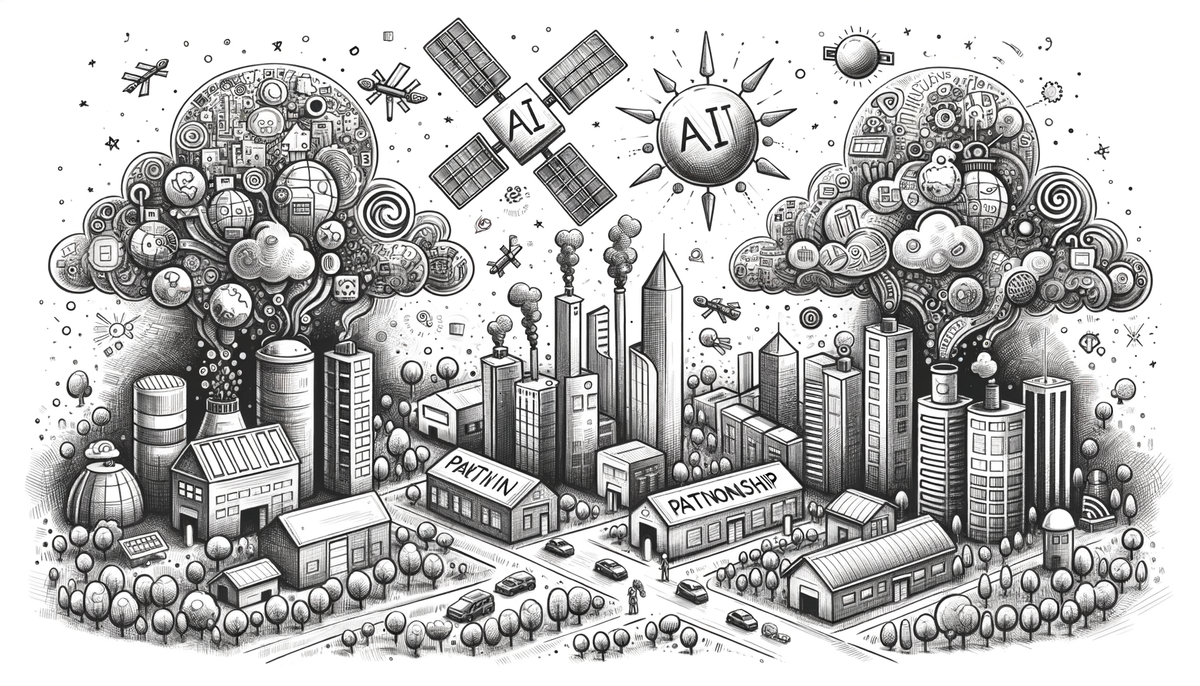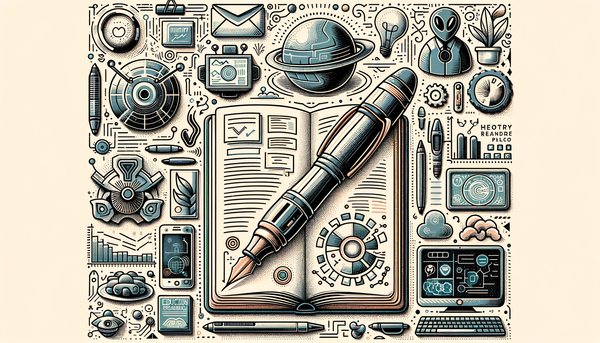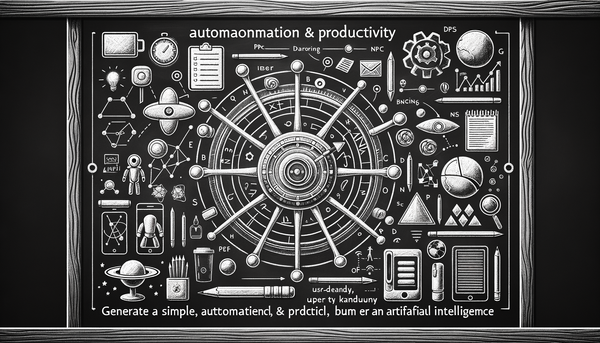AI News: Breaking Boundaries in Fashion, Ethics, and Global Cooperation

The landscape of artificial intelligence is rapidly evolving with dynamic partnerships, global regulatory debates, and innovative applications across industries. From the strategic alliance between Apple and Alibaba in China to international disagreements on AI inclusivity, and from stark warnings on AI safety to creative ventures in high fashion, this article explores the multifaceted world of AI and its far-reaching influence on business, innovation, and society.
Navigating the AI Landscape: From Strategic Partnerships to Global Regulatory Challenges
Artificial intelligence is not merely a tool—it is a transformative force that reshapes industries, redefines market strategies, and challenges traditional regulatory regimes. In recent months, we have seen a series of developments that illustrate the power of AI in driving innovation. Notably, the groundbreaking strategic alliance between tech giants Apple and Alibaba stands as a testament to how established brands are leveraging AI to extend their global influence. Simultaneously, debates on regulatory approaches and ethical boundaries have intensified, highlighting both the promise and the potential perils associated with uncontrolled AI growth. This article delves deep into these narratives, offering detailed analysis, research-backed insights, and perspectives that bridge global ambitions with local realities.
Strategic Collaborations: Apple and Alibaba's AI Alliance in China
One of the most consequential developments in the AI domain is the partnership between Apple and Alibaba, as highlighted by recent articles in the Financial Times and the South China Morning Post. This strategic collaboration leverages Alibaba’s deep expertise in e-commerce, cloud computing, and data processing, merged with Apple's forward-thinking approach to AI innovation. The synergy created by this alliance promises to revolutionize how consumer experiences are crafted, specifically tailored to the competitive Chinese market.
The venture is emblematic of a broader trend in technology where the convergence of hardware, software, and robust cloud services fosters unprecedented innovation. Apple, known for its pristine brand image and hardware innovation, is keen on incorporating advanced AI algorithms to remain competitive in markets where local players have deep domain expertise. Meanwhile, Alibaba is positioning itself as a leader in AI by integrating cutting-edge machine learning techniques into its ecosystem. Together, they are set to develop tools and platforms that could, for instance, significantly enhance personal assistants, improve recommendation engines, and optimize supply chain solutions.
For developers in China, the partnership holds tremendous promise. The buzz is palpable among Chinese iOS developers who are excitedly speculating about new functionalities that could emerge from the integration of Alibaba's data infrastructure with Apple's software prowess. This collaboration is not just a business maneuver—it’s a strategic move that could redefine market boundaries and set new standards in app development, creating opportunities for a broader ecosystem that transcends traditional consumer technology segments.
Harnessing Innovation: The Intersection of Global Ambitions and Local Dynamics
Beyond the high-profile collaboration, the current AI narrative is marked by the interplay between global ambitions and local market dynamics. Companies like Apple are not merely entering markets; they are rethinking their entire value proposition by aligning with local leaders like Alibaba. This cross-pollination of expertise sets a precedent in a world where the convergence of deep data analytics and user-centric design holds the key to future technological dominance.
Consider, for instance, the role of cloud services and e-commerce data analytics in enabling more responsive and predictive AI systems. Companies are now able to harness vast amounts of consumer behavior data to fine-tune their algorithms. In turn, these advancements are driving innovations across domains, from personalized shopping experiences to smarter, more efficient logistics. In our regular updates on AI industry advancements at AI.Biz, we have seen numerous examples where local market knowledge combined with global technological expertise has led to breakthroughs that redefine entire industry segments.
Another notable dynamic is the shifting role of traditional industry players. Artificial intelligence, once the purview of niche tech labs, is now embedded in core business strategies. The reverberations of partnerships like that of Apple and Alibaba extend even to developers, who are increasingly expected to innovate on top of established platforms. The integration of powerful AI tools in routine app development is a game-changer, enabling functionalities that were once the stuff of science fiction. As these trends continue to gain momentum, it is clear that innovation in AI is as much about partnerships and ecosystems as it is about technological breakthroughs.
Global Policy Divergence: The AI Action Summit and the Debate Over Inclusivity
While industry giants forge alliances to capitalize on the promise of AI, international regulatory bodies and governments are grappling with how to manage the rapid pace of technological advancement. A recent AI Action Summit reported by ComputerWeekly illuminated the contentious issues at play. At the summit, the United Kingdom and the United States notably refused to endorse a statement designed to promote a globally inclusive approach to AI. Their reluctance was driven by concerns that overly rigid international regulations might stifle innovation and compromise strategic national interests.
This divergence in policy perspectives underscores a fundamental tension: how to foster an environment that encourages rapid technological expansion while ensuring that advancements are inclusive and ethically sound. European nations and countries like Canada have shown readiness to adopt frameworks that emphasize inclusivity and fairness. However, the conservative approach of the US and UK reflects a strategic priority on maintaining technological competitiveness, potentially at the expense of broader global cooperation.
The debate raises important questions about international collaboration. Can a balance be struck between the need for rapid innovation and the imperative for global standards that protect against misuse? Researchers have noted that this very tension is not new; throughout history, technological revolutions have often been accompanied by regulatory struggles. In the AI era, these discussions are more urgent than ever as the stakes encompass not only economic and security dimensions but also ethical considerations that affect humanity at large.
Emerging Concerns: AI Risks, Ethical Boundaries, and the Call for Global Security Measures
As the potential for AI continues to expand, so too does the specter of its misuse. Former Google CEO Eric Schmidt's warning, reported in POLITICO Europe, captured the imagination and concern of many. Schmidt cautioned that without robust ethical frameworks and international oversight, AI could be weaponized into a tool of unprecedented destruction—drawing a grim analogy with the "Osama bin Laden scenario" to illustrate his fears.
"Unchecked AI could very well open the door to catastrophic scenarios if left in the wrong hands," Schmidt remarked. This stark warning serves as a reminder that with great power comes immense responsibility.
The apprehensions highlighted by Schmidt are not ungrounded. The ability of AI systems to process information, learn autonomously, and operate with minimal human intervention poses unique challenges, especially when malicious entities are involved. The potential for AI-driven cyber-attacks, automated misinformation campaigns, or even the development of autonomous weapons necessitates a global dialogue on security and ethical standards.
Industry experts argue for a multi-stakeholder approach that involves governments, corporations, academia, and civil society. International collaborations and research initiatives, such as those detailed in various studies on AI safety protocols, are increasingly focusing on safeguarding against such risks. As Michael Dell once commented, "We are in the early days of an AI revolution. In the long run, AI will change the very nature of how humans work and interact with machines." His sentiment captures both the excitement and the caution that surrounds AI developments.
Indeed, concrete steps are being taken across the globe, with several countries investing in AI ethics research and the establishment of regulatory bodies dedicated to overseeing AI applications. Yet, a uniform global standard remains elusive as nations navigate their own strategic imperatives and risk calculations. The challenge, then, is to ensure that the pursuit of innovation does not outpace the development of measures necessary to secure its safe and ethical deployment.
From the Court to the Catwalk: Bridging the Worlds of Sports, Fashion, and AI
In a seemingly unlikely yet fascinating twist, the world of AI is also making its mark in creative industries—illustrated by the story of an Erie native whose journey from basketball stardom to high fashion is being powered by AI. Reported by GoErie.com, this remarkable individual is reinventing herself by blending physical agility and creativity with technological innovation. The application of AI in high fashion—ranging from design conceptualization to trend forecasting—represents a convergence of data analytics and artistic intuition rarely seen before.
This narrative is a compelling example of how AI is breaking down the silos between seemingly disparate fields. It underscores the idea that technology can serve as a catalyst, enabling individuals to explore uncharted territories and redefine industry norms. In this case, the athlete is not just a former sports star; she is an embodiment of versatility, proving that success can be multifaceted and that AI-powered tools can empower creativity in ways that transcend traditional career paths.
The story resonates with anyone who has ever aspired to transition from one domain to another, echoing the age-old adage that innovation thrives at the intersection of diverse experiences. As AI continues to pervade multiple sectors, it opens up possibilities for reinventing identities, careers, and industries. This blend of athletic discipline and creative advancement, powered by AI, offers inspiring insights into the future of work and the redefinition of success.
Bridging the Innovations: Insights for a Future Powered by AI
When we take a moment to step back and analyze these varied threads—from a landmark partnership in China and international regulatory debates to urgent calls for AI safety and groundbreaking creative ventures—we begin to see a tapestry that is as complex as it is promising. Each of these narratives contributes to a broader understanding of the AI revolution, illuminating both the potential benefits and the inherent challenges.
For instance, the integration of AI into everyday technology, as seen with the Apple-Alibaba collaboration, symbolizes an industry trend where data-centric strategies and machine learning are becoming foundational. The resultant innovations are not limited to enhancing consumer electronics but are paving the way for smarter cities, improved healthcare systems, and more efficient business operations. These trends have been recurrent topics on our AI News Podcast, where experts discuss the commercialization of AI technologies and the seeds of investment being sown in this dynamic sector.
Moreover, the international discrepancies in policy—illustrated by the AI Action Summit—are a classical reflection of the tensions between innovation and regulation. While some countries favor inclusive frameworks to ensure ethical deployment, others fear that too much regulation could slow down progress. One could draw a parallel with historical technological revolutions, where regulation often lagged behind innovation until pressing societal needs demanded intervention. Today, the conversation is no different; it is a balancing act that requires both visionary leadership and prudent policymaking.
The concerns voiced by former industry leaders such as Eric Schmidt serve as an important cautionary tale. His warnings remind us that as we embrace a future driven by AI, we must not lose sight of the need for ethical considerations and robust security measures. The potential misuse of AI could pose significant risks, hence fostering an environment of collaboration and transparent governance is vital. This perspective is further enriched by research from academic institutions and think tanks that rigorously analyze the ethical dimensions of AI, underscoring the importance of interdisciplinary approaches.
A reflective quote by Stephen Hawking once stated, "AI is likely to be either the best or worst thing to happen to humanity." Although his views have sparked considerable debate, they hold a mirror to the dual-edged nature of AI: its ability to be harnessed for great benefit or conversely, misused with dire consequences. Such dichotomies are echoed in our evolving regulatory landscape and in the innovative yet cautious steps taken by tech giants and startups alike.
Looking ahead, the lessons from these developments are clear: partnerships foster innovation, inclusivity in policy is imperative for balanced growth, and robust frameworks are critical to safeguard against the risks that accompany technological leaps. In this context, the convergence of varied domains—from e-commerce to high fashion—is perhaps the most compelling testament to the boundless possibilities offered by AI.
Furthermore, initiatives aimed at exploring AI's potential in enhancing creative industries, as seen in the narrative of the Erie native transitioning from sports to fashion, indicate that the future of AI is not monolithic. Instead, it is a mosaic of interconnected innovations, continuously influenced by local cultures and global trends alike. This dynamism not only fuels economic growth but also drives social change, offering enriching stories and fresh perspectives on success.
On a practical note, applications of AI in daily life are becoming increasingly perceptible. Whether it’s voice assistants learning user preferences or AI-driven algorithms curating personalized shopping experiences, the integration of advanced machine learning techniques is revolutionizing how brands interact with consumers. Major conferences and summits around the world, many of which are spotlighted on platforms such as AI.Biz, serve as incubators for these ideas, providing both a stage and a forum for critical discourse on the future of tech.
In our continued exploration of AI trends, it is essential to keep an open dialogue that balances optimism with realism. The myriad ways in which AI is influencing sectors as diverse as finance, healthcare, and even fashion, underscores the need for cross-industry collaboration. Such collaborative efforts have the potential to standardize ethical practices, streamline regulatory policies, and ultimately harness AI's vast potential for the collective good.
A Glimpse into the Future: Preparing for a World Transformed by AI
The synthesis of these narratives paints a vibrant picture of the future—a world where technology is seamlessly woven into the fabric of everyday life, and where strategic partnerships drive unprecedented innovation. The acceleration of AI’s capabilities is prompting companies and governments alike to rethink traditional models of operation and governance. As more entities, big and small, integrate AI into their frameworks, the implications extend deeper than commercial gains—they signal a paradigm shift in how society organizes itself in the face of rapid technological change.
This transformation also brings to light the importance of responsible AI development. As organizations continue their exploratory endeavors, investing in advanced research and innovation, there is an equally critical need to invest in policymaking. This dual focus ensures that as we surge forward into the AI-driven future, we are equally prepared to manage its risks. Scholars and practitioners are increasingly pointing to the necessity for ethical guidelines, continuous monitoring, and cooperative international efforts, ideas that have been echoed in numerous research papers and industry reports.
One might look to historical innovations for inspiration. Just as the industrial revolution restructured societal norms in its wake, the AI revolution promises—if harnessed effectively—a future that radically transforms human interaction, enhances quality of life, and redefines socioeconomic landscapes. At the same time, the lessons of history underscore the importance of balancing technological progress with ethical responsibility, a balance that remains as elusive today as ever.
In reflecting on these diverse stories—from a powerhouse partnership in China to impassioned debates over regulatory frameworks, and from stark warnings about potential misuse to unlikely journeys in creative innovation—we are reminded of the complexity inherent in navigating a world transformed by AI. Each narrative represents a distinct facet of the AI mosaic, one that will continue to evolve and expand as research deepens and new applications emerge.
To paraphrase Stephen Hawking’s often-quoted sentiment, we find ourselves at a bifurcation point in history. The choices we make now in fostering AI innovation, while also putting safeguards in place, will significantly shape the technological trajectory of our future. Whether AI ultimately becomes the savior or the downfall of certain industries remains contingent upon the collaborative efforts of global stakeholders, the robustness of ethical frameworks, and the tireless pursuit of balanced progress.
Further Readings and Perspectives
For readers looking to explore more about the rapid advancements and nuanced debates in AI, consider checking out these insightful updates on our platform: read in-depth discussions on DeepMind's breakthroughs in the music industry, or dive into the latest investment trends with breakthroughs and investments shaping the AI sector. Each article contributes a unique perspective on how AI is integrated into various aspects of technology, business, and culture.
This evolving narrative of AI is a testament to its boundless potential and the ever-shifting global dynamics that govern its progress. By examining these varied stories—involving strategic corporate alliances, regulatory tensions, and even innovative personal journeys—we begin to appreciate the multifaceted nature of technological evolution. The future, it seems, is not merely about advanced algorithms and data sets; it is about the people behind them, the policies that guide them, and the creative sparks that transform challenges into opportunities.
As we look forward to a future rich with infinite possibilities and inevitable complexities, it becomes clear that an informed, balanced approach to embracing AI will be one of the most crucial determinants in shaping the prosperity and security of our global community.



